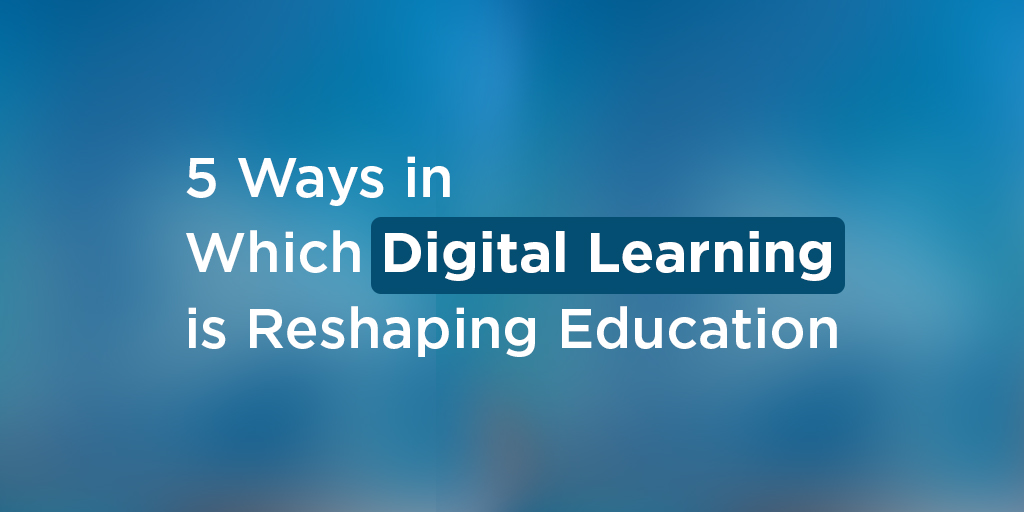Technology has had far-reaching impact on the field of education. The advent of digital learning and its steady incorporation in educational setups is reshaping the future of education in an unprecedented manner. The way teachers impart education today and the way students learn have both undergone a paradigm shift, slowly but surely paving way for digital learning to take over traditional formal education. The benefits of this reshaping of education systems around the world are manifold. Apart from making education a more collaborative and hands-on process, digital learning has also opened up avenues to learn new skills that help nurture a generation of future-ready youth.
The Impact of Digital learning on the future of education is best reflected in these five trends:
Collaborative Learning
Digital tools of learning are transforming the educational structure by encouraging deeper collaboration between students and teachers. The springing up of web discussion forums on different subjects, the creation of digitized courses, and online learning tools such as class wikis, video tutorials, and eBooks have changed the way students interact with study materials. This has also transformed the way students engage with assignments, as the multiple avenues to source study materials help create a more diverse understanding of different subjects and topics. These changes have resulted in a deeper collaboration between teachers, peers, and mentors for class assignments and projects. All in all, the sound pedagogical structure of digital tools promotes the enhancement of skill sets and encourages critical thinking.
Inverted Classroom Dynamics
In a traditional education setup, teachers would deliver a lecture on a particular topic or lesson, which culminated with class and home assignments for students. With digital learning, the dynamics of classroom learning are turned on their head. Students have a variety of digital tools at their disposal to learn about the basics of any topic or subject covered in textbooks, which helps them use the classroom and the expertise of their teacher to dig deeper into the subject matter. Popularly known as the flipped classroom model, these inverted classroom dynamics is becoming vastly popular with the rise of EdTech. This makes learning a more engaging and interactive process, rather than students being passive recipients of classroom lectures.
Critical Thinking
Easy and instant access to information has made rote learning a thing of the past. Instead of mindlessly mugging up textbooks materials, students today can focus on doing something with the information or knowledge their receive. This involves analyzing, comparing, and contrasting information and then testing its practical application by creating something from scratch. This model of learning helps hone young minds into critical thinkers who can fit in a highly competitive world setting.
New Skills
The skills needed to survive and thrive in the modern world are fast changing. The inclusion of digital literacy at the very core of education helps students internalize new digital technologies as they are launched, thus, helping them stay competitive in the real world. Today, digital literacy is no longer limited to studying computers as a subject in the curriculum but has moved on to using it as a basic tool for imparting and receiving education. Handling different devices, gadgets, software, and hardware day in and day out as part of the education process goes a long way in shaping a tech-savvy generation with skills that are aptly suited for the world they’d eventually venture into.
Enabling Innovation
Digital learning has helped assignment formats, learning contexts, and assessment methods to evolve. The open nature of the online environment has pinned focus on encouraging innovation in learning, and changing the outlook of the education system to attribute importance to learning progress and not merely learning endpoints. Consequently, audience-oriented approaches, accurate synthesis of information, and research-based learning methods have started taking root. In an already information-saturated world, this change in outlook has encouraged students to go back to the drawing board, analyze and examine information, and innovate with the outcomes of their learning.
In a steeply digitized world, traditional brick-and-mortar classrooms that employ age-old methods of imparting education hone students into future-ready young minds. Digital learning has to be an indispensable part of the education process. The impact of digital tools in reshaping education has been substantial. One that is only expected to grow with advancements in technology.

